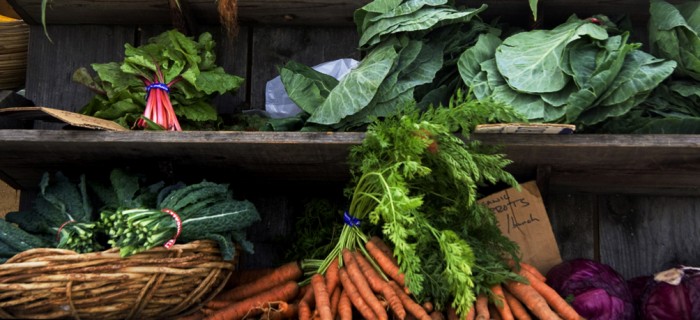Democracy in Action: Food Policy Councils
Food First Backgrounder, Fall 2009, Vol. 15, No. 3
The food and financial crises bring fresh urgency to concerns over hunger, food access, public health, labor, and economic development issues—with citizens and governments beginning to connect these issues back to the food system. Councils are springing up across North America to “connect the dots” between the growing number of neighborhood food initiatives and communities forging policies for just, healthy food systems. What can we learn from North America’s three-decade experiment in local food policy? Food First just completed a study: Food Policy Councils, Lessons Learned that includes a literature review and 48 interviews with the people involved in Food Policy Councils. While food policy planning is still in its infancy, Food Policy Councils provide a hopeful model for creating a more sustainable, democratic food system.
The Case for Food Policy Councils
For decades, the failings of our food system have been seen as isolated problems, to be dealt with by a fragmented array of government and non-governmental agencies at the state and local levels. These failings are largely treated separately: Health advocates tackle diet-related diseases through healthy eating campaigns. Farm groups look for solutions to the ever-shrinking profit margins for family farms. Food justice groups advocate for better access to healthy food in low-income neighborhoods. Other groups attempt to eradicate poverty and create local jobs, and fight for better working conditions for immigrants and food workers, focusing on living wage laws and union organizing. Food Policy Councils are attempting to integrate these efforts under one, locally-controlled roof.
The power of informed, democratic collaboration, especially when linked to the specific places where people live, work and eat, has an additional, emergent quality: it can change the way we—and others—think.
A Food Policy Council consists of a group of representatives and stakeholders from many sectors of the food system. They often include anti-hunger and food justice advocates, educators, non-profit organizations, concerned citizens, government officials, farmers, grocers, chefs, local business owners, food processors and food distributors. Food Policy Councils create opportunities to discuss and strategize among these various sectors, and create an arena for viewing and addressing issues of the local food system as a whole. Councils can be city, county, regional, or state-wide. Some councils are actually housed in a government agency. Others are hosted by non-profits or become non-profits themselves
The central aim of Food Policy Councils is to identify and propose innovative solutions to improve local or state food systems, making them more environmentally sustainable and socially just. We found Food Policy Councils generally have four functions:
- to serve as a forum for discussing food issues
- to foster coordination between sectors in the food system
- to evaluate and influence policy, and
- to launch or support programs and services that address local and regional needs.
Stay in the loop with Food First!
Get our independent analysis, research, and other publications you care about to your inbox for free!
Sign up today!Not all Food Policy Councils take on all four functions. However, these four functions are often integrated—for example in programs connecting local farmers and co-ops directly to food banks and school lunch programs.


 Help Food First to continue growing an informed, transformative, and flourishing food movement.
Help Food First to continue growing an informed, transformative, and flourishing food movement.




